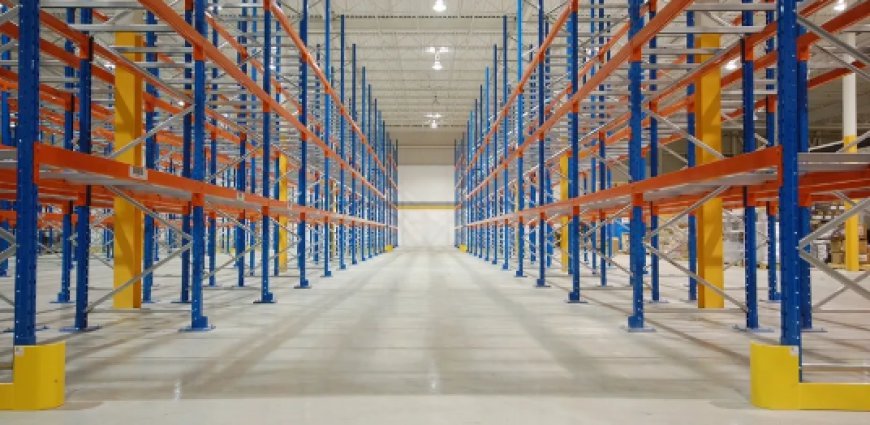The Role of Racking Dismantling in Modern Warehouse Management
The benefits are substantial, from optimizing space and enhancing safety to improving inventory management and supporting operational flexibility.

The modern business environment is rapid and constantly changing, making efficient warehouse management essential. Have you ever wondered how dismantling warehouse racking plays a role in this efficiency? This blog delves into the importance of dismantling warehouse racking, exploring its impact on space optimization, safety, and overall warehouse operations.
Optimizing Warehouse Space
Effective warehouse management hinges on the ability to optimize space. Dismantling warehouse racking is a key component in this process. As businesses grow and product lines change, the need to reconfigure storage spaces becomes inevitable. By dismantling and rearranging racking systems, warehouse managers can maximize storage capacity and improve the flow of goods. This enhances efficiency and reduces the need for additional storage facilities, ultimately saving on costs.
Enhancing Safety Standards
Safety is paramount in any warehouse setting. Over time, racking systems can become unstable due to wear and tear, posing significant risks to employees and inventory. Dismantling warehouse racking allows for regular inspections and maintenance, ensuring that only safe and stable structures remain in use. This proactive approach to safety helps prevent accidents, reduces downtime, and fosters a safer working environment.
Facilitating Inventory Management
Effective inventory management is critical for the smooth operation of any warehouse. Dismantling warehouse racking enables managers to reorganize storage systems based on current inventory needs. This adaptability ensures that high-demand items are easily accessible, reducing the time to pick and pack orders. Moreover, a well-organized warehouse minimizes the risk of stock discrepancies, leading to more accurate inventory tracking and improved customer satisfaction.
Supporting Operational Flexibility
Flexibility is crucial in the dynamic world of logistics and supply chain management. Dismantling warehouse racking provides the flexibility needed to adapt to changing business requirements. Whether accommodating seasonal inventory fluctuations or integrating new product lines, the ability to reconfigure storage systems quickly is invaluable. This flexibility allows operations managers to respond promptly to market demands, ensuring that the warehouse remains efficient and productive.
Cost-Effective Reconfiguration
Investing in new racking systems can be costly. However, dismantling warehouse racking offers a cost-effective solution for reconfiguring storage spaces. Businesses can save on purchasing new systems by reusing and repurposing existing racking components. Additionally, the ability to dismantle and reassemble racking as needed extends the lifespan of the storage infrastructure, providing long-term cost savings.
Improving Workflow Efficiency
A well-organized warehouse layout is essential for efficient workflow. Dismantling warehouse racking allows for the creating of optimized storage configurations that streamline the movement of goods. This optimization reduces employees' time navigating the warehouse, thereby increasing productivity. An efficient workflow enhances employee morale, contributes to faster order fulfillment, and improves overall operational efficiency.
Environmental Considerations
In today's environmentally conscious business landscape, sustainability is a key consideration. Dismantling warehouse racking supports sustainability efforts by promoting the reuse and recycling of materials. Instead of discarding old racking systems, businesses can refurbish and repurpose them, reducing waste and minimizing their environmental footprint. This sustainable approach aligns with modern corporate social responsibility initiatives and appeals to eco-conscious customers.
Facilitating Warehouse Relocation
Business expansion or relocation often necessitates the dismantling of warehouse racking. When moving to a new facility, it is essential to dismantle and reassemble racking systems to fit the new space. This process ensures that the new warehouse layout is optimized for efficiency from the outset. Properly planned dismantling and relocation minimize disruption to operations, allowing for a smoother transition and continuity of business activities.
Conclusion
In conclusion, dismantling warehouse racking is a strategic practice pivotal in modern warehouse management. The benefits are substantial, from optimizing space and enhancing safety to improving inventory management and supporting operational flexibility. Dismantling racking systems allow businesses to adapt to changing needs, optimize workflows, and achieve cost-effective reconfiguration. Moreover, it promotes sustainability and facilitates seamless warehouse relocation.
For warehouse managers, logistics and supply chain professionals, business owners, operations managers, and facilities managers, understanding the importance of dismantling warehouse racking is crucial. By prioritizing this practice, businesses can create efficient, safe, and adaptable warehouse environments that meet the demands of today's competitive market.
In an era where efficiency and adaptability are key to success, dismantling warehouse racking is vital to effective warehouse management. Embrace this practice to ensure your warehouse remains a cornerstone of operational excellence and customer satisfaction.

 Businessuse
Businessuse